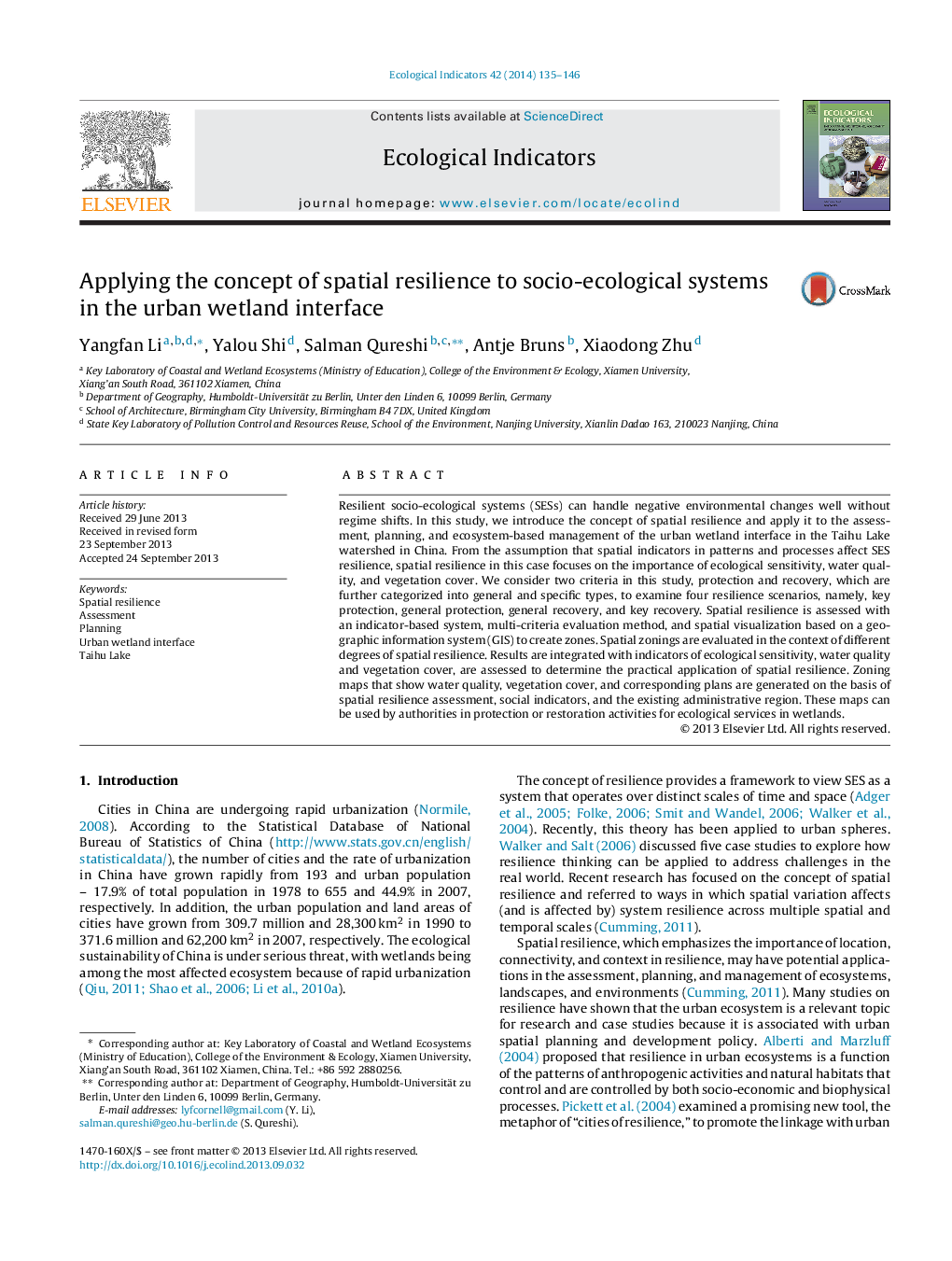| Article ID | Journal | Published Year | Pages | File Type |
|---|---|---|---|---|
| 4373149 | Ecological Indicators | 2014 | 12 Pages |
Resilient socio-ecological systems (SESs) can handle negative environmental changes well without regime shifts. In this study, we introduce the concept of spatial resilience and apply it to the assessment, planning, and ecosystem-based management of the urban wetland interface in the Taihu Lake watershed in China. From the assumption that spatial indicators in patterns and processes affect SES resilience, spatial resilience in this case focuses on the importance of ecological sensitivity, water quality, and vegetation cover. We consider two criteria in this study, protection and recovery, which are further categorized into general and specific types, to examine four resilience scenarios, namely, key protection, general protection, general recovery, and key recovery. Spatial resilience is assessed with an indicator-based system, multi-criteria evaluation method, and spatial visualization based on a geographic information system (GIS) to create zones. Spatial zonings are evaluated in the context of different degrees of spatial resilience. Results are integrated with indicators of ecological sensitivity, water quality and vegetation cover, are assessed to determine the practical application of spatial resilience. Zoning maps that show water quality, vegetation cover, and corresponding plans are generated on the basis of spatial resilience assessment, social indicators, and the existing administrative region. These maps can be used by authorities in protection or restoration activities for ecological services in wetlands.
